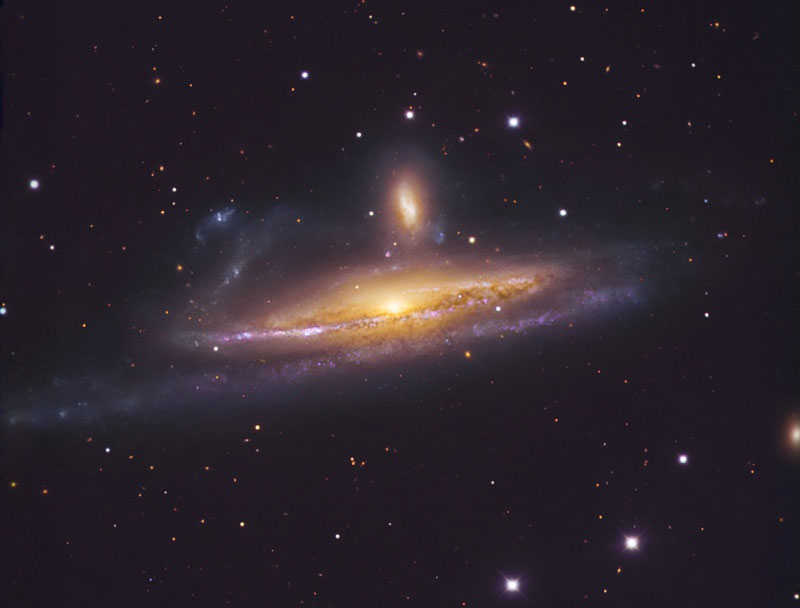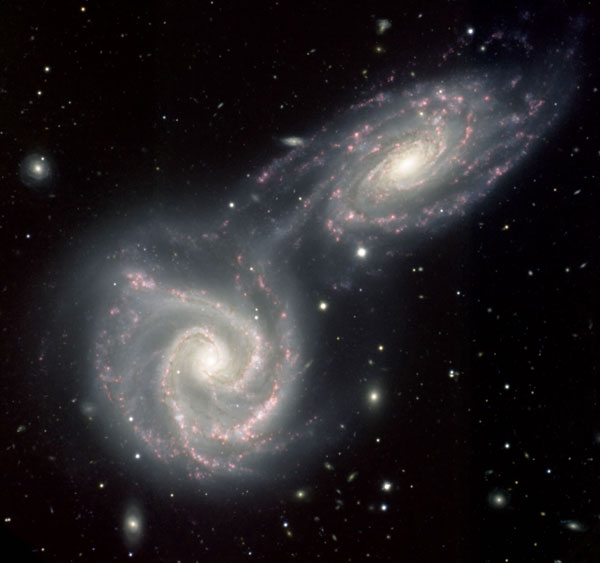The galaxy eats each other to grow
Large galaxies feed on small galaxies or bump into other large galaxies to form a more massive galaxy.
The University of Utah astronomers have discovered that the center of the largest galaxies is getting "denser" . This may be evidence of collisions and constellations of large galaxies with about 100 billion stars.
"We found that during the past 6 billion years, matter that forms large galaxies is focusing on the centers of those galaxies. This is the proof that large galaxies are colliding to form into larger galaxies , " said astronomer Adam Bolton, author of the study.
"Most recent research has determined that large galaxies grow by eating many small galaxies," he added, "We think that large intergalactic collisions are just as important as the process. there".

According to many studies, galaxies scale up by eating smaller galaxies.
New research published in The Astrophysical Journal is carried out by Bolton's team from Sloan Digital Sky Survey - III. They used 2.5m optical telescopes at Apache Point and the Hubble space telescope to observe and analyze, focusing on gravitational interactions in galaxies located between Earth and distant galaxies. more. The gravitational pull of a galaxy bends light from a galaxy farther away.
The size of the ring of light is used to determine the size of the lens galaxy and the speed of the star is used to calculate its density.
This study was conducted with elliptical galaxies, the largest, most massive galaxy, containing up to 100 billion stars."They are the result of collisions and the formation of previous generations of galaxies. Perhaps hundreds of collisions have happened," Bolton said.
Although according to many recent studies, elliptical galaxies have become so large because they "eat" smaller galaxies but Bolton's computer simulations show that only large galactic collisions can do so. Increasing the thickness in the center of the galaxy.

According to new research, collisions between the two gods
Large galaxies increase the mass at the center of the galaxy.
When a small galaxy merges into a large galaxy, it will be separated by gravity. Its stars will not be at the center but exist at the outer edge of the galaxy.
"However, if you have two galaxies about the same size, they will penetrate each other's center when impacted, so the mass in its center will increase," Bolton explained.
He believes that large intergalactic collisions explain why their collective mass is increasing. Meanwhile, galaxies eat smaller galaxies as a reason to reduce starlight from the galactic center.
The new study also suggests that large galactic collisions are "dry collisions" - which mean that the galaxies have lost a large amount of gas because most of the gas has returned to form stars.
- The female fairy eats meat
- This is why people who are still skinny despite eating a lot, others just breathe the air is also fat
- Discovered 'evil galaxy' transparent like illusion
- Discover the farthest galaxy ever
- Discover the most 'cramped' galaxy
- Hubble discovered the galaxy with brilliant lenses
- The discovery of new super galaxies is 160,000 times brighter than the sun
- Real plants grow up from the stomach of the dead
- The galaxy is 13.28 billion light-years from Earth
- Find the farthest galaxy
- The human galaxy will collide with the galaxy M31
- Revealing the largest galaxy in the universe
 Van Allen's belt and evidence that the Apollo 11 mission to the Moon was myth
Van Allen's belt and evidence that the Apollo 11 mission to the Moon was myth The levels of civilization in the universe (Kardashev scale)
The levels of civilization in the universe (Kardashev scale) Today Mars, the sun and the Earth are aligned
Today Mars, the sun and the Earth are aligned The Amazon owner announced a secret plan to build a space base for thousands of people
The Amazon owner announced a secret plan to build a space base for thousands of people